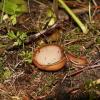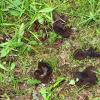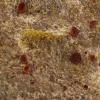
09-01-2026 17:41
Arnold BüschlenHallo, F. dilatata wird von vielen Bryoparasiten

10-01-2026 20:00
Tom SchrierHi all,We found picnidia on Protoparmeliopsis mur

07-01-2026 22:22
 Danny Newman
Danny Newman
Tatraea sp. on indet. hardwood The Swag, Great Sm

10-01-2026 01:18
 Danny Newman
Danny Newman
cf. Neovaginatispora fuckelii on indet. shrub Pre

07-01-2026 10:24
 Danny Newman
Danny Newman
Pezicula sp. on indet. hardwood Appalachian Highl

09-01-2026 10:08
 Blasco Rafael
Blasco Rafael
Hola, en el mismo habitat que la anteriorRetamaDia

08-01-2026 21:22
 Blasco Rafael
Blasco Rafael
Hola, He recogido esta muestra de Orbilia sobre Re

07-01-2026 17:29
 Marc Detollenaere
Marc Detollenaere
Dear Forum,On a barkless Populus I found some smal

10-11-2021 17:33
 Riet van Oosten
Riet van Oosten
Add-on topic http://www.ascofrance.com/forum/7059

07-01-2026 10:05
 Danny Newman
Danny Newman
cf. Chaetospermum on XylariaCosby Campground, Grea
 Hi, friends. I am currently in Finland and came accross three cup funghi which I wish to share with you, I have identified one as Humaria hemisphaerica but the others I had not much time to investigate and perhaps someone can save me some time if familiar with them :-)
Hi, friends. I am currently in Finland and came accross three cup funghi which I wish to share with you, I have identified one as Humaria hemisphaerica but the others I had not much time to investigate and perhaps someone can save me some time if familiar with them :-)
Hello Stephen,
I would agree with nr 1 Humaria hemisphaerica.
2 and 3 should be a Peziza. I assume it is acid soil there? Then both specimens could be P. badia. But it should be proved microscopically.
Regards from Lothar

The dark brown cups are Peziza badia, while I am still unsure about the third Peziza mainly because I do not remember that there was any dark-brown specimens; the cups where smaller (1-4cm); and the habitat was different, yes probably acidic too, but in sand/gravel shelves. Nevertheless I could go and check again. Unf. I have no microscope here in Finland.

Case is closed, both 2 and 3 are Peziza badia (=nothing interesting for most of you else distribution is up North in Jakobstad area, Finland).


